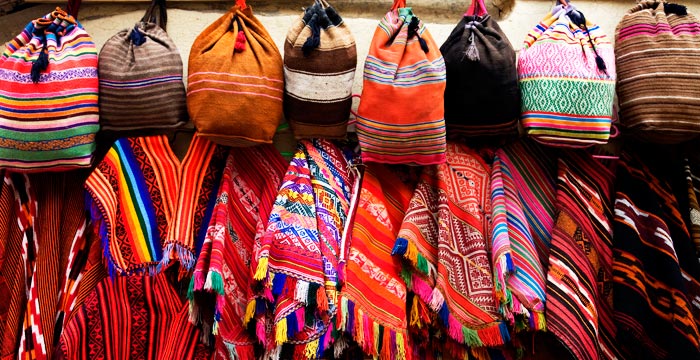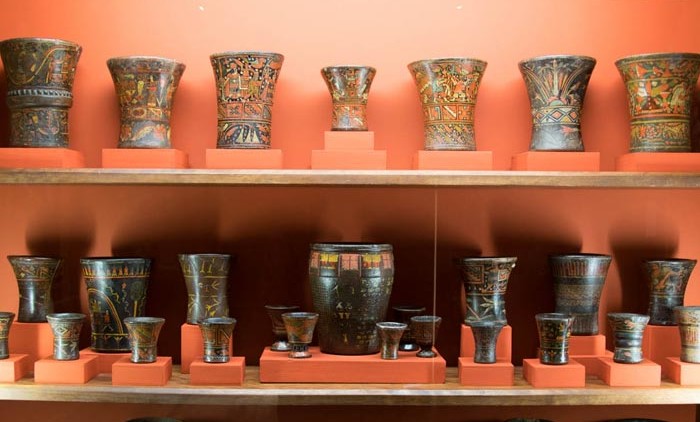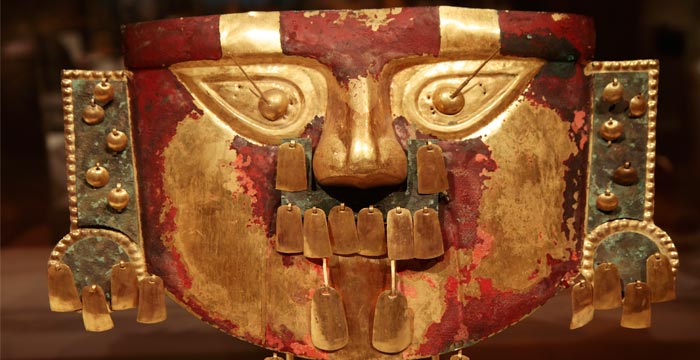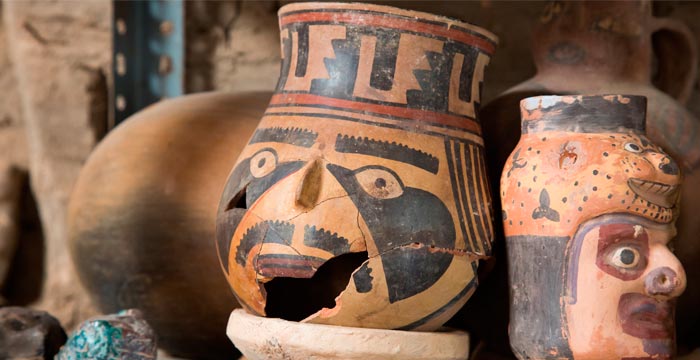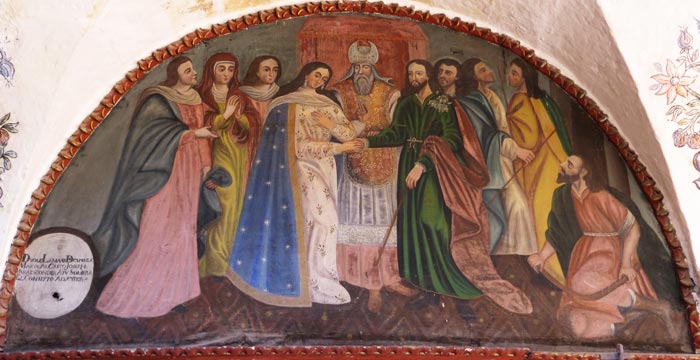Peruvian Art & Craftwork
Dating back to the pre-Inca days, arts and craftwork have been deeply ingrained in Peruvian culture. From quirky masks to intricately carved gourds and complex woven textiles, much of Peru’s impressive age-old techniques and artisanry are still practiced today. Come to know Peru’s beautiful ancient crafts on your custom Peru vacation.
Peruvian Weaving
Weaving is a vital part of Peru’s art and crafts culture. For millennia, isolated pastoral communities have been producing exquisite textiles. Each village has its own distinctive and highly symbolic patterns and designs, which have been passed down from generation to generation.
The weaving process typically begins with the shearing of the wool from an alpaca, sheep or llama. After being cleaned and spun into yarn, natural plant-based dyes are used to provide color, before locals skillfully transform the wool into beautiful textile products, such as ponchos, scarves and table runners. Kuoda can bring you to a weaving community during your personalized tour of Peru. Here, you can witness the weaving process and learn about the time-honored artisan tradition from local master weavers.
Peruvian Gourd Carving
In the city of Cochas, Peru, high in the central Andes Huancayo region, the ancient craft of gourd carving is a long-standing local custom. For more than 4,000 years, artisan families living here have been hacking away at the dried, hard-skinned fruits using engraving tools and even burning techniques to color them various shades of brown and black. These are no rudimentary jack-o’-lanterns either; some of the gourd designs are astonishingly intricate, with whole stories often illustrated on one piece.
Travelers who want to buy a carved gourd can find them at craft booths in Cusco and Lima. If you’d rather learn more about this ancient vanishing art, Kuoda can arrange for you to go to Cochas and meet the artists who practise this intriguing ancient craft.
Mask Making in Peru
Making masks for religious and ceremonial uses has been part of Peruvian life, since the late Paleolithic era, with both pre-Inca and Inca civilizations engaging in the tradition. These handcrafted faces come in a variety of shapes and colors, with all kinds of quirky design elements, from cartoon-esque features such as bulbous noses to devil horns. The materials used to make masks varies too, ranging from cloth and tree bark to silver, cooper and even – as in the case of the mask uncovered in the Lord of Sipán’s tomb in 1987 – gold.
But mask-making is not just a thing of the past. Even today, painted paper mâché and plaster numbers are frequently worn during Peru’s colorful festivals, including the Virgen de la Candelaria in Puno and the Virgen del Carmen Festival in Paucartambo.
Paucartambo, in particular, has a rich mask-making heritage. Mask artists such as the recently deceased Santiago Rojas dedicated a lifetime to building remarkable ceremonial version, which were used in the Virgen del Carmen festival.
For travelers who want to inspect the older pre-Inca models, the Gold Museum and the Larco Museum in Lima have collections on show. If you’d rather see the more modern, painted paper maché versions during your private Peru holiday, the best place for it is Paucartambo – Kuoda will gladly make all the arrangements on your behalf.
Peruvian Ceramics
Pottery is intrinsic to culture in Peru. Among the earliest pottery producers were the Chavín people, who began making earthen vessels shaped like jaguars and other animals from as early as 1,000 B.C. They weren’t the only ancient Peruvian culture to dabble in the art of ceramics: the Paracas people made colorful pieces, while the Moche people made the now famous X-rated “sex pots.” Today, the artisan tradition of pottery lives on with modern-day Peruvian potters often adding a modern twist to pre-Columbian traditions.
Want to survey some ancient ceramic art during your customized tour of Peru? Let Kuoda take you to Lima’s National Museum of Archaeology, Anthropology, and History to check out pre-Inca pottery, and to the capital’s Larco Museum for a glimpse at the Moche’s most titillating erotic pieces. After brushing up on Peru’s pottery heritage, you may want to see some more current and perhaps even in-progress pieces at artists Pablo Seminario’s and his wife, Marilú Behar’s, studio.
Colonial Style Painting in Peru
During the 17th and 18th centuries, as Spanish monks established the Cusco School of Painting and began to work with native Peruvian artists, a particular type of Baroque-style painting arose. Despite the noticeable European influence, the Cusco School artworks still features some unmistakably indigenous elements. Among the most famous Peruvian artists from this period was Marcos Zapata, whose “alternative” Last Supper depiction sees a guinea pig replace the traditional lamb centerpiece – this masterpiece now hangs in Cusco Cathedral.
Paintings from the Cusco School are on show at the Historical Museum of Cusco, La Merced Convent Museum and at the Museum of Santa Catalina Monastery, while reproductions can be seen at galleries around Cusco’s Plaza de Armas.

